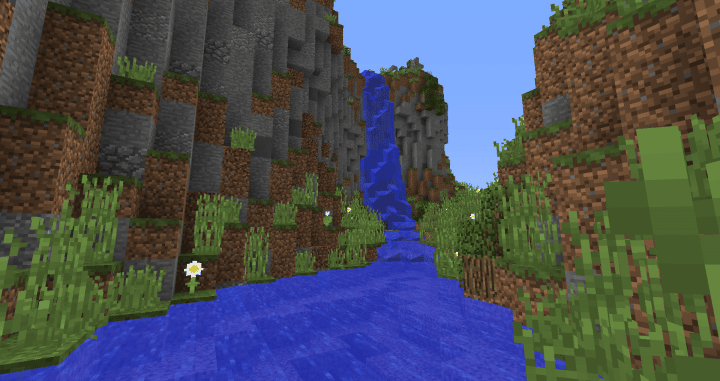
Water is one of the most important resources in the real world, and it’s no different in Minecraft. It can be used for farming, fishing, and even as a means of boat transportation. However, one of the most important aspects of water in Minecraft is how it flows. Understanding how it flows is crucial for making the most out of it. In this guide, we will cover everything you need to know about how far water flows in Minecraft.
How far does water flow in Minecraft?
The distance that water flows in Minecraft depends on several factors, including the type of block it is placed on, the slope of the terrain, the presence of obstacles, and the presence of currents created by other water sources.
In general, water flows at a speed of one block per second and can flow up to a maximum of 7 blocks away from its source block, although the exact distance can vary based on the specific circumstances.
It’s also important to note that water will flow downhill and attempt to level out, so the distance that water flows can be affected by the surrounding terrain.
Basic Principles of Water
Water in Minecraft is subject to a number of basic principles. These principles dictate how water flows and interacts with other blocks in the game. Here are the key principles you need to know:
- Water always flows from higher to lower ground. This means that if you place a water source on top of a hill, it will flow down the hill until it reaches the lowest point.
- Water always tries to level out. If you place a water source in a flat area, it will spread out in all directions until it reaches a uniform depth.
- Water flows at a speed of one block per second. This means it takes 10 seconds for the water to flow 10 blocks.
Water Sources in Minecraft
Water sources are the starting point for all water flows in Minecraft. A water source is any block of water that can generate additional water blocks when it is next to other water blocks. There are two types of water sources in Minecraft:
Water springs
These are natural sources of water that can be found in the game. They generate in specific biomes, such as oceans, rivers, and lakes. Water springs generate water blocks in a 5×5 area around them.
Water buckets
Players can also create water sources by using a water bucket. When a player places a water bucket on a block, it creates a water source that generates water blocks in a 3×3 area around it.
Flowing Water in Minecraft
When water flows in Minecraft, it creates a current that can push items and entities in the game. The speed and direction of the water flow are determined by the source of the water and the blocks around it. Here are the key factors that affect how far water flows in Minecraft:
Obstacles
Water will flow around solid blocks, but it will not flow through them. If there is an obstacle in the way, the water will split and flow around it.
Waterfalls
If water flows off the edge of a block, it creates a waterfall. Waterfalls can be used to create water slides or placed inside an awesome-looking build map.
Currents
When water flows, it creates a current that can push entities and items in the game. The strength of the current depends on the speed and direction of the water flow. If there are multiple sources of water flowing in different directions, the currents will combine to create a more powerful flow.
And that was our guide on how far water flows in Minecraft. Do you have the itch for more Minecraft-related content? Check out the other guides that we’ve made:
- Ultimate Minecraft Mining Guide
- Ultimate Minecraft Mining Guide
- Ultimate Minecraft Potion Brewing Guide
- Ultimate Minecraft Piglins Bartering Guide
- Best Minecraft Mods
Not got Minecraft yet? Buy it from Minecraft.net!
